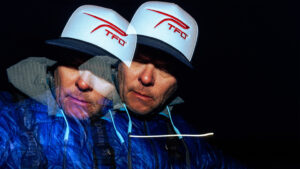In the valley nestled between the Eastern Slope of the Sierra Nevada mountains and the Western Slopes of the Inyo and White Mountains in Eastern California lies the Owens River. It’s headwaters begin just south of Mono Lake and then winds almost 200 miles south. While the river is probably most famous for being at the center of the California Water Wars in the early 1900s, in the last several decades it has become better known as one of the finest trout streams in the country.
Originally, the only native fish species to the river was the tui chub, but over the years rainbow, brown and even the famed Lahontan cutthroat trout have been introduced, making it a world-class fishery with a very real possibility of a grand slam on any given day. In fact, both my wife and I have pulled grand slams from the Owens in the past year.

While the Owens is truly a river of all seasons, it is perhaps at its most scenic, and arguably most productive for big fish, in the winter. When the air turns cold and the Sierras become covered in snow, the “Snow Bows” begin their migration out of the deep waters of Lake Crowley, to start their spawning trek into the headwaters of the Upper Owens just outside of Mammoth. It takes an ardent angler to pursue these fish across the snow-covered, windy pastures, but when you find them, the numb fingers and wind-burned skin will prove worthwhile. There are no small fish in the Upper Owens in the winter.
Keep in mind that these are fish on their way to spawn. The waters of the extreme reaches of the Upper Owens are clear this time of year and the shallow rocky stretches where they carve out their redds are obvious, and only the lowest-class of human would bother the fish on these spawning beds or wade through them. However, in the deeper bends and runs of the Upper “O” as it drops into Lake Crowley and for a few miles further up-river, the fish stack up as they start their march.
The O is not a big river by any standards. In fact, at its widest, the Upper Owens is maybe 20 feet across, so runs and riffles are short and holes that hold the big fish are few, but each of those holes can easily hold a a half dozen or more trophy-sized fish that will run you from bend to bend, tail-walking and jumping, if you know how to fish them properly. It takes patience and perseverance but when that line comes tight, its always worth it.

The issue in the winter is accessing the river across acres of fields covered in feet of snow. Some trudge through it on foot (I don’t recommend this option), some use snow shoes, but many are turning to snow mobiles. Whatever your choice of transport, just dress warmly. Your hands will become particularly cold, so one trick I’ve learned is to wear thin wool glove liners under rubber gloves. There is no definitive data on the consequences of handling fish with these rubber gloves, so I recommend taking them off to handle caught fish. Your discomfort for a few minutes is worth it to ensure these fish survive. And please remember not to take fish out of the water for more than a few seconds during the cold winter months — their gills can freeze in seconds when exposed to the cold air.
As for gear, I prefer a longer rod like the 10-foot 4-weight Blue Ribbon matched with an NTR or BVK SD reel in size 1 or 2. The added length of the rod makes presentations and mending easier while maintaining distance as you fish the seams and edges of the deeper holes. While a pair of perdigon-type flies or nymphs under an indicator are highly effective, tight-line nymphing can also prove productive to plumb the deep pools, so a 3-weight Stealth rod, or the configurable Drift rod are worth bringing along for sure. I prefer the Drift because it’s a bit stouter than the Stealth in its 10-foot configuration, but that’s a personal choice. I also like to bring my 9-foot 4-weight Blue Ribbon as well to drift small steamers along the undercut banks along the runs between bends. You just have to be very stealthy creeping along the banks so you don’t spook holding fish.

This past winter I was lucky enough to pull four big snow bows from one hole while my wife managed another three. I had to admit that I wasn’t sure what to expect from a frigid day that began with me on the back of a snow mobile, but the peaceful winter mountain scenery, broken up only by the steaming waters of the Upper Owens, held a promise that made it worthwhile. The instant that first fish broke the surface of the water, I knew that promise had been fulfilled.

I can promise you that watching a big rainbow tail walk down river, ripping line off the reel with the snow covered Sierras in the background will make you forget the ice build-up in your guides and your numb fingers and nose for at least a few minutes. I hate the cold, but for a shot at those big Upper O Snowbows, I’ll put on an extra layer and persevere any time. And I can always day dream about the summer hopper hatch while I clutch my hand warmers and wait!
Blog and photos by TFO Ambassador Scott Leon.

![]()







